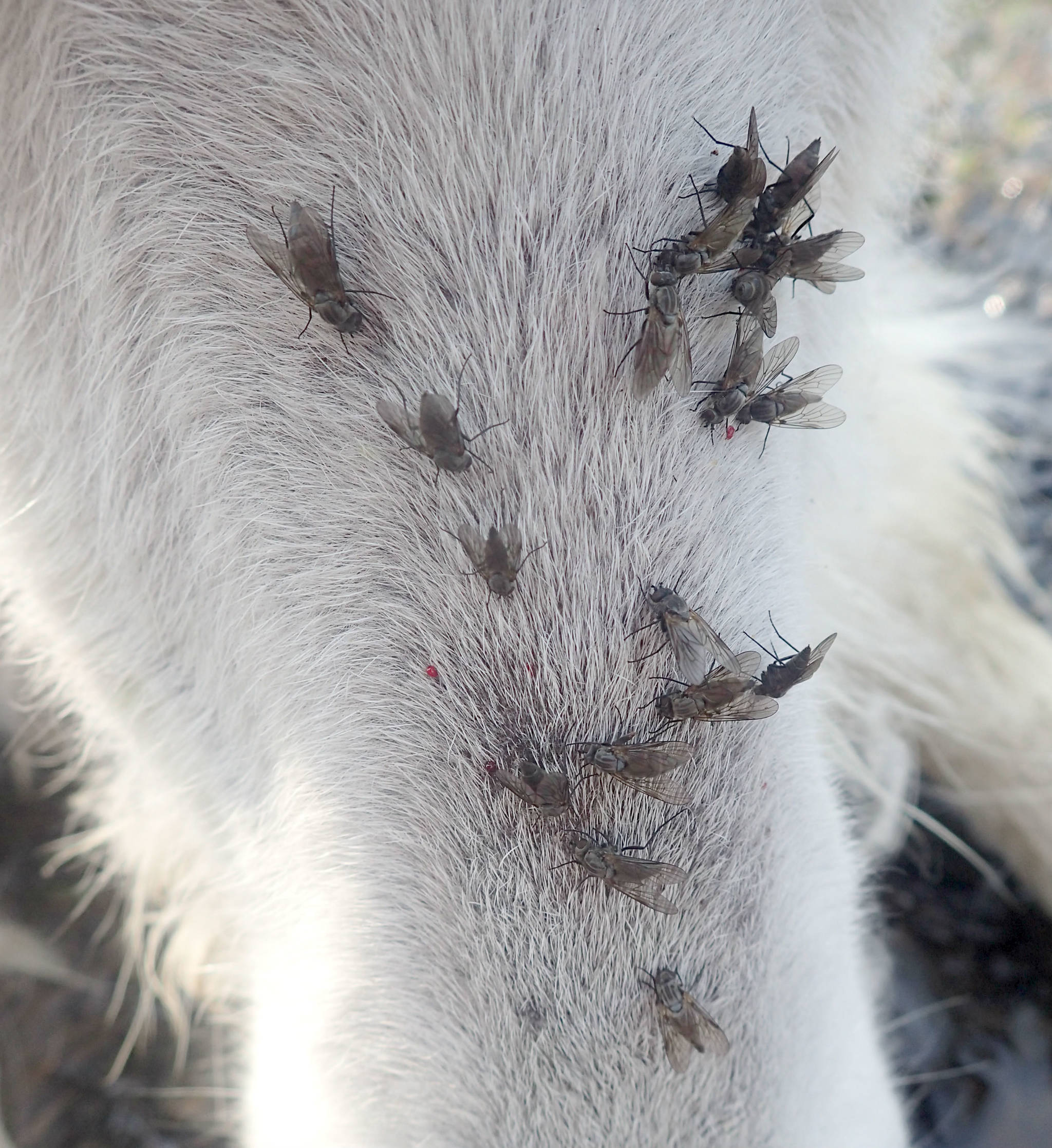On a glorious, sunny day years ago after biking up the Resurrection Pass Trail to Juneau Lake, my companion and I paused to enjoy the spectacular alpine view and cool breeze by the water. The initial tranquility was brief. Within minutes, tens of flies the size of house flies landed on us and, with little delay, bit. These were unlike sneaky mosquitoes or black flies that can often take a blood meal without being detected; these things hurt!
Our encounter was not unique. A friend recently sent me a text regarding an experience in the Kenai Mountains asking, “What are those biting flies up in the alpine? … Looks like a regular ol’ fly but bite like hell.”
We had become acquainted with the Kenai Peninsula’s least famous biting flies, known by the names of biting snipe flies, blood-sucking snipe flies, Rocky Mountain biting flies, and other names not suitable for printing in the newspaper.
Biting snipe flies can be found in parts of Europe and Asia, but this group is most diverse in western North America, where they live in montane and coastal meadows. On the Kenai they are encountered almost exclusively in wet alpine or subalpine areas. The adults usually appear only for a few weeks in mid to late summer.
Females readily take blood from humans, dogs, livestock, and game animals. They have been described in entomological literature as “vicious biters” with bites that are “rather painful” to “savage.” Even among other biting snipe flies, the species commonly encountered in the Kenai Mountains was described by entomologist John Aldrich in his 1915 review of North American biting snipe flies as “the bad biter par excellence.”
Biting snipe flies alight unobtrusively on people and may crawl under clothes before biting. When numerous, these flies can form audible “following swarms” around potential hosts, which may be the reason for their scientific name of Symphoromyia, which means “accompanying flies.”
Their combined behaviors of persistent harassment, crawling on skin, and painful bites have been known to cause panic in some people, even in entomological researchers. During a study of snipe flies in Alberta, one observer, “draped an insect net over his head, slapped frantically at the assembled flies, and finally had to leave the observation area.”
Reactions to snipe fly bites vary, ranging from no reaction to more severe inflammation, even leading to hospitalization in one documented case. In general, their bites are painful and may persist for days. In my personal experience in the Kenai Mountains, the initial bites were keenly painful, but I did not experience any lasting inflammation or itching.
As with other flies that take multiple blood meals, it is conceivable that biting snipe flies could carry pathogens from animals to humans or among people, but no case of disease transmission by these flies has been documented to date.
When pursuing horses, cattle, goats, and deer, a female snipe fly generally does not buzz around, instead landing directly on the host’s head without delay. Feeding is concentrated on the face and ears, with most bites taking place on the bridge of the nose. Developing antlers of male deer are also a favored feeding site. By angling their bodies upwards when feeding, snipe flies are able to get past the dense guard hairs of their hosts in areas where other biting flies have difficulty.
When attacks are severe on mule deer, bare spots may appear on face and ears. The deer respond to biting snipe flies by ear flicking and sometimes wiping the flies off of their faces, but the flies do not appear to stress them greatly. Interactions of biting snipe flies with other wildlife species have not been well studied.
Male biting snipe flies do not take blood. They aggregate in swarms to which the females come to mate.
Habits of the larvae of Symphoromyia are poorly known. The slow-moving maggots live in damp soil where they are at least partly predaceous. In a laboratory setting, Alaskan biting snipe fly larvae fed on other fly larvae and were even cannibalistic, piercing their prey and feeding on the innards.
Very little research has been done on ways to control or cope with biting snipe flies, perhaps because they are usually encountered only locally, the females are active for only a short time, and they are not known to transmit disease. For example, I could find no information on effectiveness of insect repellants for thwarting their attacks.
If you find yourself being hounded by biting snipe flies, I recommend following my example. When my friend and I were attacked at Trout Lake, we hopped back on our bikes, soon leaving those pestiferous flies in our dust. As vicious, painful, and often cursed as they may be, I am thankful that our biting snipe flies tend to be a passing nuisance that can usually be left behind.
Matt Bowser serves as Entomologist at the Kenai National Wildlife Refuge. You can find more information at http://www.fws.gov/refuge/kenai/ or http://www.facebook.com/kenainationalwildliferefuge.

